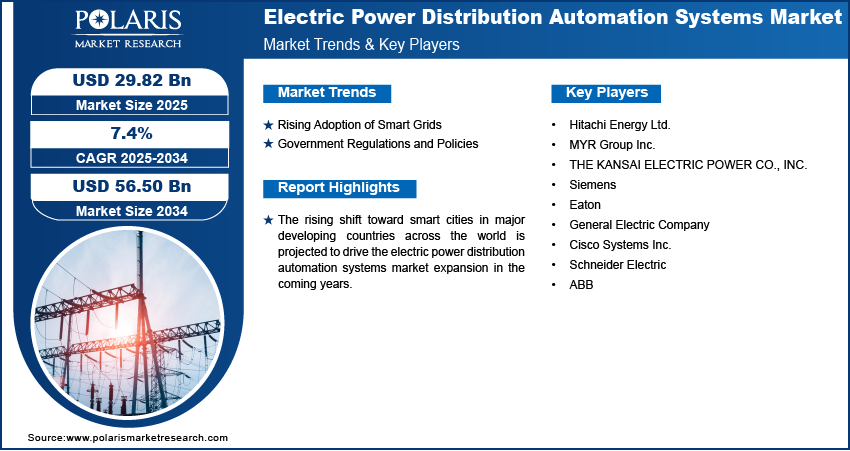
Electric Power Distribution Automation Systems Market By Component (Field Devices, Software, Services, Communication Technology); By Implementation (Feeder Automation, Substation Automation, Consumer Side Automation); By End-User (Residential, Commercial, Industrial, Others); By Region, Segments & Forecast, 2018 - 2026
- Published Date:Sep-2018
- Pages: 113
- Format: PDF
- Report ID: PM1430
- Base Year: 2017
- Historical Data: 2015-2016
Report Outlook
The global electric power distribution automation systems market was valued at USD 14.6 billion in 2017 and is anticipated to grow at a CAGR of 5.8% during the forecast period.
Electric power distribution automation systems consist of several components which assist in monitoring and safe distribution of electricity. A typical system consists of a distribution substation which receives the power from the main station, distributor transformers which step the high voltage down to distribution levels along with other components such as feeders, switches, protection equipment, measurement equipment, and others. These components form a system that provides safe transmission of power, along with organizing and screening the same.
The growing demand for electricity, coupled with high demand for smart grids drive the growth of the electric power distribution automation systems market. The increasing investments in transmission and distribution infrastructure further supports market growth. The growing adoption of smart cities is also expected to support market growth during the forecast period. Other factors driving the market include technological advancements, increasing ageing infrastructure, rising need for automation and intelligent systems in electric power distribution, and growing need to update existing networks. Growing demand from emerging economies, and technological advancements are factors expected to provide numerous growth opportunities in the coming years.

Segment Analysis
The global electric power distribution automation systems market is segmented on the basis of component, implementation, end-user, and region.
Based on component, the market is segmented into field devices, software, services, and communication technology. The field devices accounted for the highest market share in 2017 owing to increasing adoption of smart grids and growing use of components such as smart sensors, smart meters, voltage regulators, smart relays, and others.
On the basis of implementation, the market is segmented into feeder automation, substation automation, and consumer side automation. The substation automation segment dominated the global Electric Power Distribution Automation Systems market in 2017.
The end-user segment is categorized into residential, commercial, industrial, and others. The industrial segment dominated the global market in 2017 owing to high demand for smart grids from the sector.
Regional Analysis
Geographically, the electric power distribution automation systems market across North America, Europe, Asia-Pacific, Latin America, and MEA. North America is further segmented into U.S., Canada, and Mexico. Europe is divided into Germany, UK, Italy, France, and Rest of Europe. Asia-Pacific is bifurcated into China, India, Japan, and Rest of Asia-Pacific. North America accounted for the largest share in the global electric power distribution automation Systems market in 2017.
Competitive Landscape
The leading players in the electric power distribution automation systems market include General Electric, Eaton Corporation Plc, Mitsubishi Electric Corp., ABB Ltd., G&W Electric Company, Schneider Electric, Elster Solutions, Schweitzer Engineering Laboratories, Siemens AG, and S&C Electric Company among others. These leading players in the market are introducing innovative products in the market to cater to the growing demand of consumers. Global players are entering new markets in developing regions to expand their customer base and strengthen market presence.

